The Most Holy Theotokos alone, among all humanity, was able to offer to God our human nature perfect and sinless. She alone moved God to come down to Earth to take on flesh, taking from Her flesh. After Christ, She plays the main role in the incarnation of God and the salvation of man. The only garment of the Mother of God that has been preserved from Her earthly life until the present day is Ηer Holy Belt. Countless miracles have been recorded which the Holy Belt has worked throughout time and up until our very days.

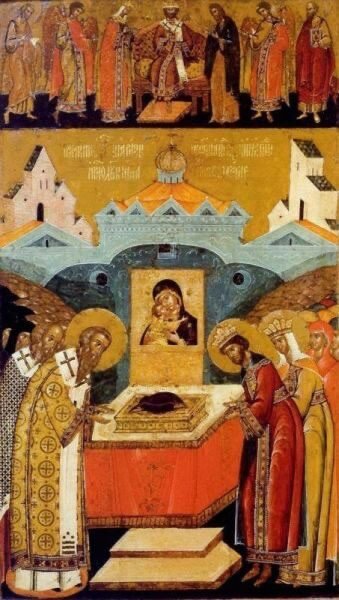
Early Christian Tradition/
1st Century A.D.
The Origin of the Holy Belt
The history of the Holy Belt begins in the land of Israel, where the Holy Mother Mary was born. According to tradition, the Belt was made of camel hair by the hands of the Holy Theotokos Herself, as all young Jewish women made these as a symbol of purity. The Holy Belt had encircled the waist of the Mother of God when she had carried Christ in Her womb, and as an infant, Christ would come into continual contact with it. After Her Dormition, upon Her Assumption to Heaven, She gave it to the Apostle Thomas.
The largest relic of the Holy Belt, belonging to the All-Holy Mother of God, resides today in the Holy and Great Monastery of Vatopedi. Divided today into three pieces, it is the only remaining treasure that has been preserved from Her earthly life.
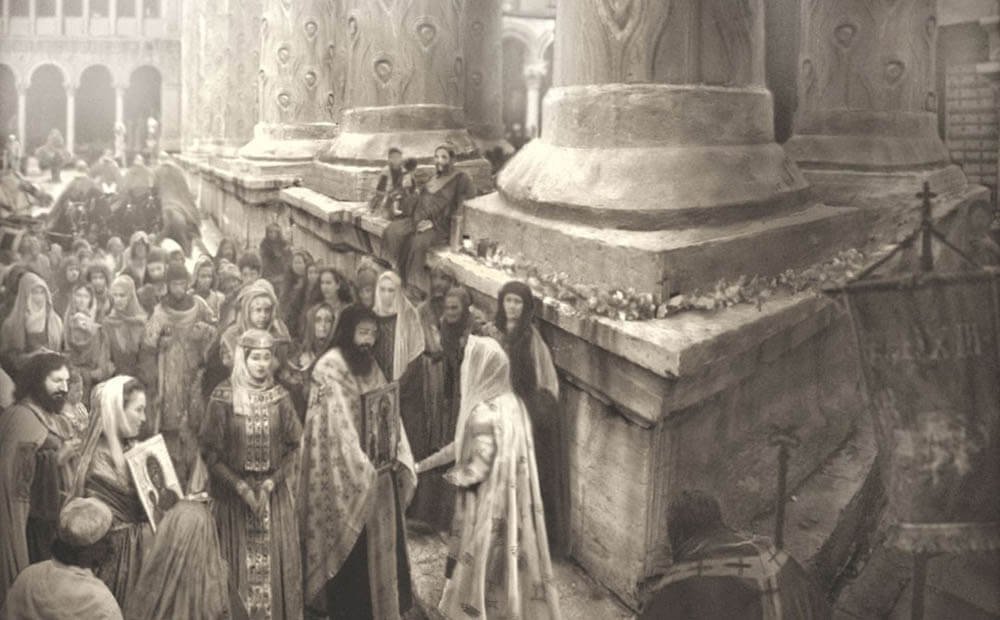
Early Christian Custodianship/
1st – 4th Century A.D.
The Preservation of the Holy Relic
Two poor but devout women in Jerusalem undertook the preservation of the Holy Belt. A short time before Her Dormition, Our Most Pure Lady had told Saint John the Evangelist to give the same women Her two garments. Pious virgins of this family undertook the safekeeping of the Belt from one generation to the next.
During the reign of the Byzantine emperor Arkadios, son of Theodosius the Great, the Holy Belt was transferred to Constantinople, the glorious capital of the Byzantine Empire. Arkadius placed the relic in a beautiful reliquary, which he called “the holy reliquary”. The Deposition took place on the 31st of August. The relic was to protect the capital of the empire and its inhabitants from attacks of the enemies, misfortunes, and from the machinations of the demons.
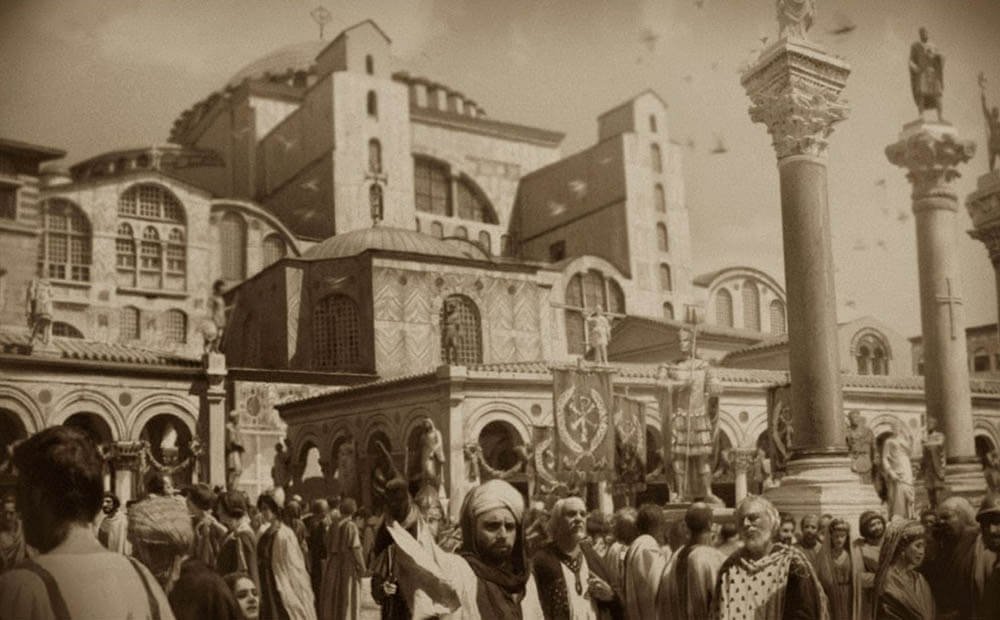
Byzantine Relocation/
6th Century (527-565 A.D.)
The Belt’s Journey to Zila and Return to Constantinople
In the next century – when and how is not known – the Holy Belt was transferred to Zila, to the south of Amasia, Cappadocia. It was returned to Constantinople during the reign of Emperor Justinian I (527-565), the builder of the Church of Holy Wisdom (St. Sofia). His successor, Justinian II, and his wife, Sophia, renovated the Church (Theotokos of Chalkoprateia) and erected a chapel dedicated to the Sacred Reliquary. The Holy Belt was kept on the Altar.
Many miracles were brought about in Constantinople by the Holy Belt. It healed Zoë Zaoutzaina, the wife of Emperor Leo VI the Wise (886-912), who was tormented by an unclean spirit. When the Patriarch placed the Holy Belt upon her, she was immediately released from her torment. As an expression of her gratitude, Empress Zoë took responsibility for the preservation of the Holy Belt and wove a golden thread into the belt.
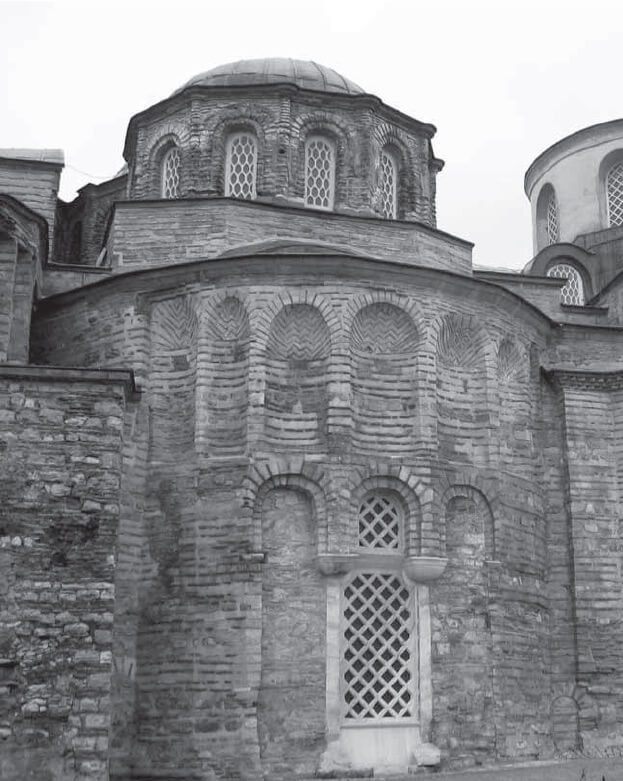
Spiritual Significance and Miracles/
8th – 12th Century A.D.
Divine Fragrance and Miracle-Working Power
Germanos [Herman] I, the Patriarch of Constantinople, (715-730), lyricized that the Holy Belt eternally retains the divine fragrance of the miracles it has brought about, bringing joy to those who approach it with faith and reverence. And Joseph the Hymnographer (ca. 816-866) praises the holy relic because, through the grace of Our Most Holy Lady, it sanctifies those who come reverently to venerate it; elevating them from corruption, and releasing them from maladies and sorrows.
In about 1150, the Holy Belt was to be found in the Great Palace of Constantinople, in the Church of St. Michael. It had probably already been divided into pieces, which were located in different churches.
In the twelfth century, specifically during the reign of Manuel I Komnenos (1143-1180), the feast day of the Holy Belt was formally established on 31 August, even though it had previously been celebrated with the feast day of the Garment of the Mother of God, on 2 July.
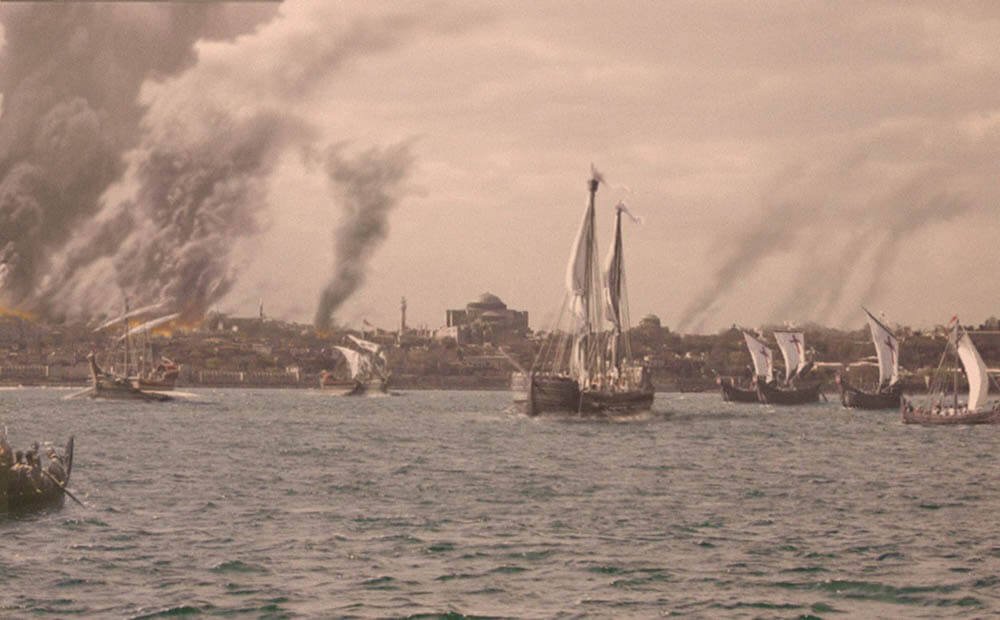
Crusader Era and Relic Dispersal/
1204 A.D.
The Fourth Crusade and Western Seizure
After the fall of Constantinople during the Fourth Crusade in 1204, some pieces were seized by the barbarian hordes and transported to the West. Fortunately, all was not lost. It is certain that part of the Holy Belt remained in Constantinople, and that, when the city was retaken in 1261 by Michael VIII Palaeologus, it was kept in the Church of Blachernae.
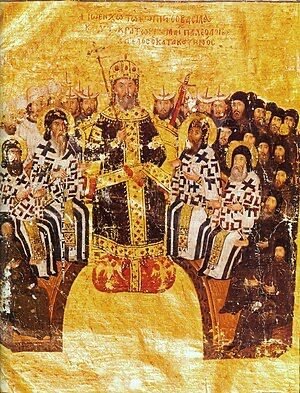
Imperial Donation to Monasteries/
14th Century (1341-1354 A.D.)
Vatopedi Monastery Acquires the Belt
The largest portion of the Holy Belt which survives today are three pieces that are preserved in Vatopedi monastery. Two pieces had been donated to the monastery; the third, smaller piece resulted when one of the first two pieces was divided when the Holy Belt visited the town of Ainos [Enez] in the eighteenth century.
The donor of the first portion of the Belt was Emperor John VI Kantakouzenos (1341-1354). He gave a large portion of the Holy Belt to Vatopaidi together with many other valuable treasures and is considered one of the Monastery’s greatest benefactors. Kantakouzenos later abdicated the imperial throne and became a monk by the name of Ioasaf. In all likelihood, he also resided at the Monastery of Vatopedi. In the large chest of the Holy Belt, which was made in 1818 in Moscow, there is a drawing with Emperor John Kantakouzenos holding the Holy Belt and offering it to the Monastery of Vatopedi.
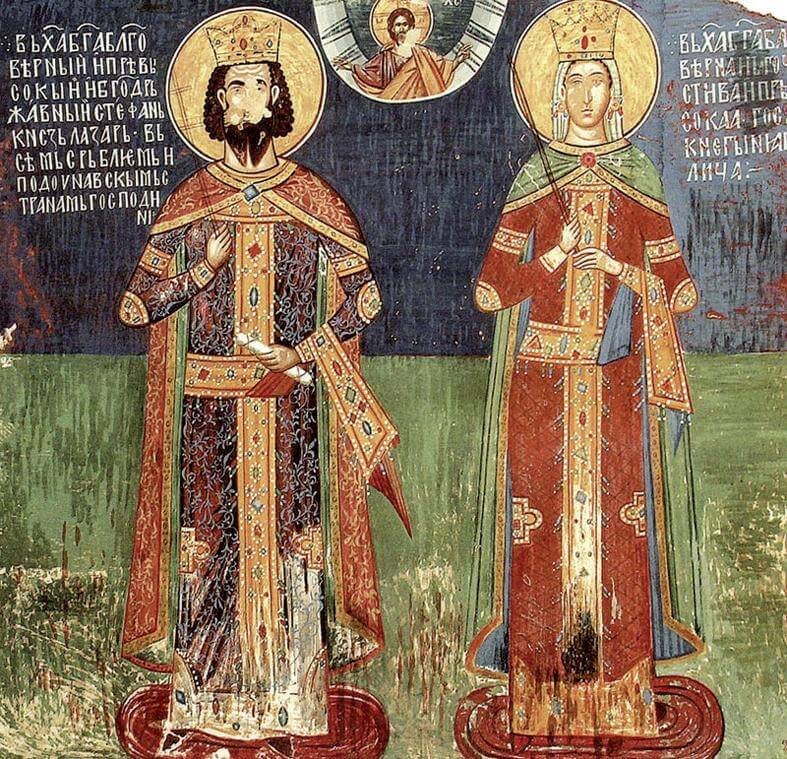
Royal Gift of Relics/
Late 14th Century (1330-1389 A.D.)
Prince Lazar and the Serbian Donation
The donor of the second piece of the Belt was the great martyr, Prince Lazar I Knez of Serbia (1372-1389), who gave the Belt as a gift after the following events. Constantine the Great had had a cross made which he took with him on campaigns in order to protect himself and his troops. In its center; a portion of the Holy Cross had been placed along with hollow receptacles where in the relics of great martyrs were kept, as well as a piece of the Holy Belt. All the emperors took that large Cross with them during their military campaigns.
Towards the end of the 12th century, in a battle against the Bulgarians, Emperor Isaac II Angelos (1185-1195) was defeated by the Tsar Asen. A priest threw the king’s cross into the river, so that it would not be defiled by the enemy, but the latter found it and handed it over to Tsar of the Bulgarians, Asen. The Bulgarians were at odds with the Serbs and relations deteriorated further.
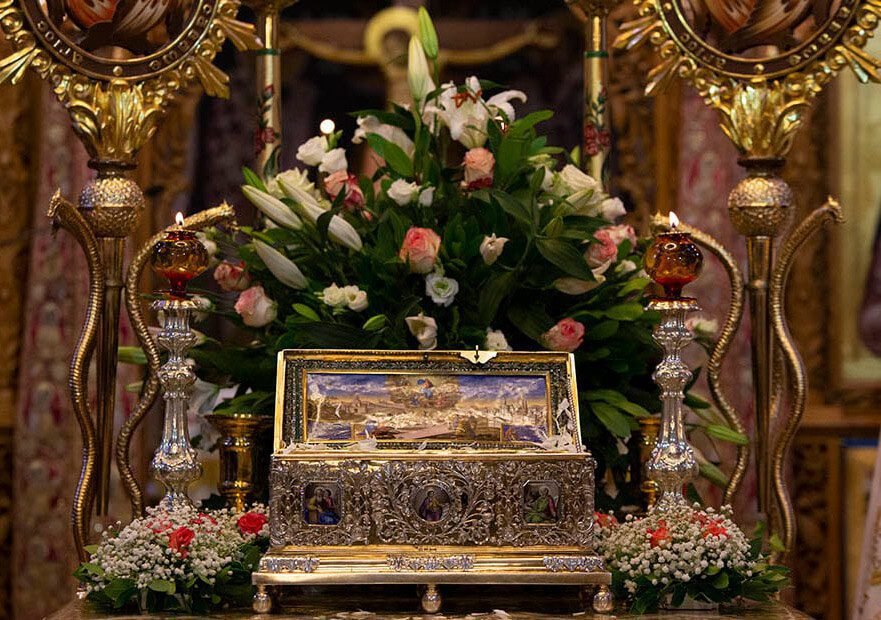
Ottoman Era Religious Processions/
15th – 19th Century A.D.
Sanctifying Campaigns in Ottoman Rule
In about 1330, the Bulgarian army was defeated in battle by Prince Lazar, the Great Martyr of Serbia, and the king’s Cross passed into the hands of the Serbs. Forty years later, Lazar donated the King’s Cross of Constantine the Great to the Monastery of Vatopaidi. On the back of the Precious Cross, the following is written in Serbian:I, Lazar, Knez of Serbia and Emperor of Greece, donate this powerful weapon, together with the immaculate Belt of my All-Pure Lady to the Monastery of Vatopaidi in my kingdom.Since then the Holy Belt has been kept in the sanctuary of the main church of the monastery.

Modern Reverence and Miracles/
Throughout History (Including Modern Times)
The Miracles and Ongoing Faith
During the years of Ottoman rule, the monks of the monastery carried out religious processions with the Holy Belt in Crete, Macedonia, Thrace, Constantinople, and Asia Minor for the purpose of sanctifying and sustaining the enslaved Greek people, and for the relief of every infectious disease.
Throughout history, the Holy Mother, through Her Holy Belt, has rendered a multitude of miracles for all humankind. The personal experience of the presence of God in people’s lives is confirmed by everyone who has received Her beneficial aid. The most distinct effects of Her miracles have been the wonder of repentance and a return to faith, and above all, the manifestation of God in our lives.